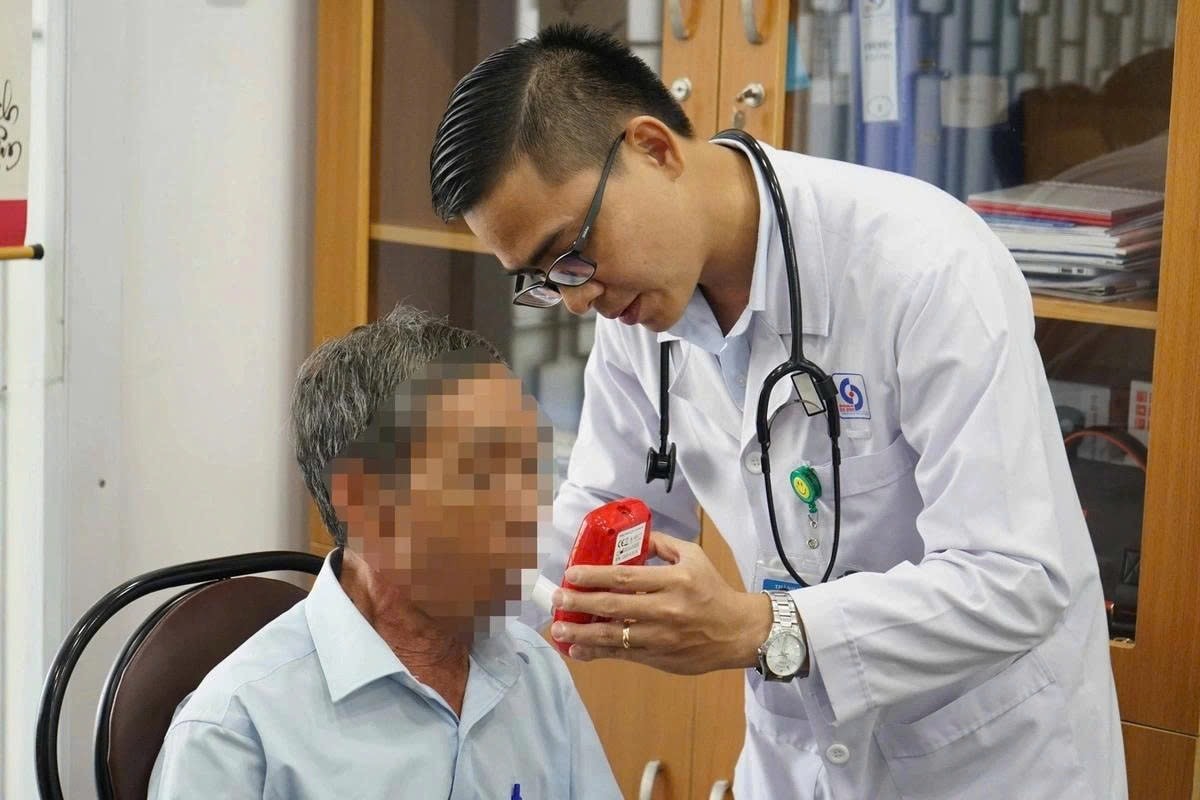Support for smoking cessation in the community
Tobacco addiction occurs as a result of the neurological effects of the addictive substance nicotine. Tobacco addiction is often a combination of psychological addiction, behavioral addiction and physical-pharmacological addiction.
Most smokers know that smoking causes many serious health problems. In fact, many have and are planning to quit smoking. The results of a survey on smoking among adults (over 15 years old) in 2023 showed that in 2023, up to 50.5% of smokers wanted to quit smoking - meaning that half of smokers were waiting for proper support. The proportion of smokers who had received advice from medical staff to quit smoking increased sharply from 40.5% in 2015 to 90% in 2023, showing the clear impact of counseling activities at hospitals, especially the leading role of central units such as Bach Mai Hospital.
Since 2015, with the support of the Tobacco Harm Prevention Fund (Ministry of Health ), Bach Mai Hospital has developed into a center for counseling and treatment of smoking cessation at the end of the line, while also playing a role in providing professional guidance to provincial and district health facilities nationwide. Based on the experience of Bach Mai Hospital, the smoking cessation counseling model is being expanded to 10 major hospitals nationwide with hotline 1800.1224. Some places have also piloted the integration of the smoking cessation counseling room with the chronic obstructive pulmonary disease (COPD) management room, a method that helps directly connect disease treatment and change smoking behavior.

One of the effective, practical and suitable solutions for the actual conditions in our country is the community-based smoking cessation model. One of the typical models, highly appreciated in recent times, is the community-based smoking cessation support model based on primary health care, piloted by the Tobacco Harm Prevention Fund (Ministry of Health) in some localities such as Thai Binh, Hai Phong, Quang Tri, Khanh Hoa and Ho Chi Minh City. The model is based on the principle of being close to the people, convenient, low cost and sustainable.
Accordingly, the model is deployed at commune and ward health stations, where people can easily access without having to travel far. Here, medical staff are trained in depth in counseling and support skills for smoking cessation, including: short counseling (5-10 minutes) and in-depth counseling (20-30 minutes); use of communication materials, nicotine dependence assessment forms; monitoring, calling to remind and encourage addicts; and family counseling to create a positive support environment.
At the same time, some medical stations also provide addiction treatment support drugs (such as nicotine gum or lozenges) in case the addict needs and is prescribed.
Through monitoring the results from localities implementing the model, many positive signals have been recorded. In Thai Binh, after 6 months of implementation, more than 60% of smokers were counseled at the health station, of which nearly 30% of people quit smoking completely or significantly reduced the number of cigarettes per day. In Khanh Hoa, the model was implemented in Dien Khanh commune, with the result that 35 people successfully quit smoking within 1 year - an encouraging number at the grassroots level. In Quang Tri, the combination of community propaganda and support at the health station helped double the rate of people willing to quit smoking compared to before implementation.
In addition, the model also helps reduce smoking in families, public places and raise awareness among people, especially young people and pregnant women. From the practical implementation of this model, it shows that the model is effective because of easy access, low cost, people only need to go to the health station near their home, no consultation fee, no need to go to large specialized facilities; grassroots health workers are close to and understand the people, thereby creating trust, friendliness and easy long-term attachment.
Not to mention, participating in the model, each smoker is assessed for their level of dependence, causes, and circumstances of smoking to develop a quit plan suitable for each person. At the same time, the family, women's associations, and residential groups participate to help the addict quit without feeling isolated or pressured.

Reduce smoking gradually and eventually quit.
According to doctors' recommendations, you should not stop smoking suddenly, but should gradually reduce the amount of cigarettes and then quit completely. This way, the cravings will gradually decrease and adjust to the body's resistance.
To quit smoking completely and successfully, Master, Doctor, Doctor Vu Thi Diu, Deputy Head of the Department of Internal Medicine and Respiratory Medicine, Hospital 19-8 recommends some products to support smoking cessation, specifically, people quitting smoking should use nicotine patches directly on the skin once a day and should only use them during the day. Or use nicotine lozenges, treatment usually lasts about 12 weeks. After 1 - 2 hours, take 1 lozenge in the first 6 weeks, 2 - 4 hours / 1 lozenge in the 7th - 9th week and every 4 - 8 hours in the 10th - 12th week.
Quitting smokers can also use a nicotine nasal spray (available by prescription only), which delivers nicotine quickly into the bloodstream with one spray into each nostril once or twice an hour. Or a nicotine inhaler (available by prescription), which releases nicotine from an inhaler into the mouth. Quitting smokers can also use nicotine gum, chewing a piece of gum every 1-2 hours, but not more than 24 pieces a day.
Nicotine medications such as Bupropion (Zyban) are the only medication approved by the U.S. Food and Drug Administration (FDA) to help smokers quit smoking that does not contain nicotine. They should be started 1 to 2 weeks before quitting and continued for 7 to 12 weeks.
People quitting smoking should also maintain healthy living habits, exercise regularly, avoid staying up late, get enough sleep and sleep on time.
In the National Strategy on Tobacco Harm Prevention and Control to 2030, the Ministry of Health has oriented to develop and promulgate regulations and rules to integrate tobacco cessation counseling activities into national health programs on non-communicable diseases, chronic obstructive pulmonary disease, health programs, improve community health and professional activities of medical facilities nationwide, and develop tobacco cessation counseling services.
At the same time, research, propose and promulgate regulations on the production and import of products to support drug addiction treatment; research and propose payment for treatment and counseling activities for smoking cessation from the Health Insurance Fund.
Source: https://baolaocai.vn/hieu-qua-tu-cac-mo-hinh-ho-tro-cai-nghien-thuoc-la-post884266.html




![[Photo] General Secretary attends the parade to celebrate the 80th anniversary of the founding of the Korean Workers' Party](https://vphoto.vietnam.vn/thumb/1200x675/vietnam/resource/IMAGE/2025/10/11/1760150039564_vna-potal-tong-bi-thu-du-le-duyet-binh-ky-niem-80-nam-thanh-lap-dang-lao-dong-trieu-tien-8331994-jpg.webp)


![[Photo] Discover unique experiences at the first World Cultural Festival](https://vphoto.vietnam.vn/thumb/1200x675/vietnam/resource/IMAGE/2025/10/11/1760198064937_le-hoi-van-hoa-4199-3623-jpg.webp)





























![[Photo] Opening of the World Cultural Festival in Hanoi](https://vphoto.vietnam.vn/thumb/1200x675/vietnam/resource/IMAGE/2025/10/10/1760113426728_ndo_br_lehoi-khaimac-jpg.webp)



































































Comment (0)